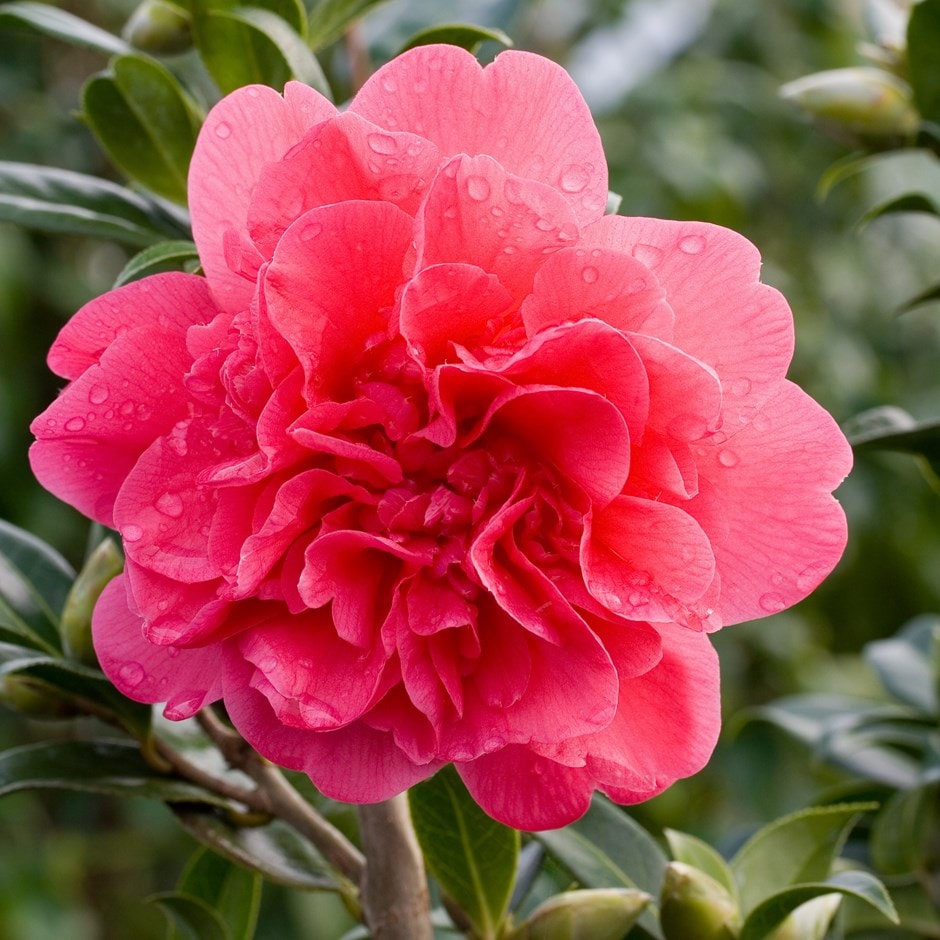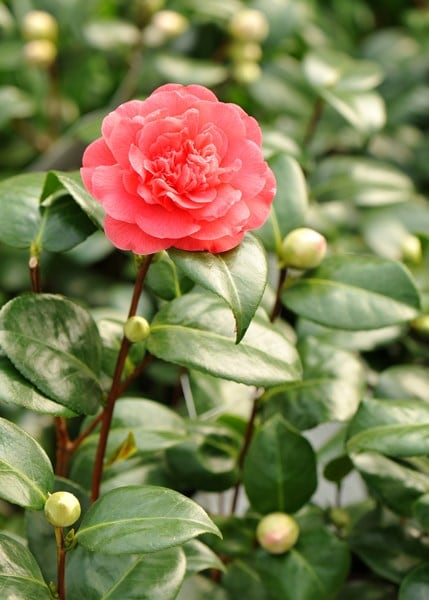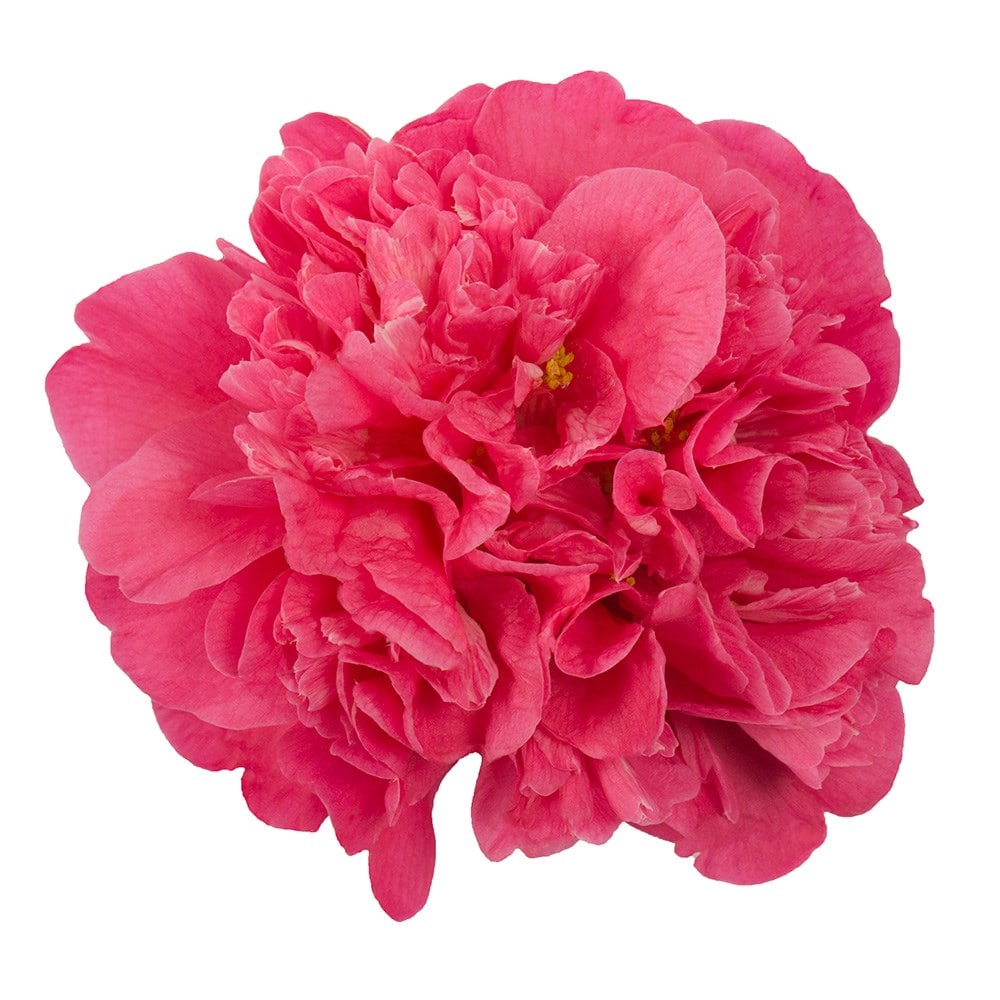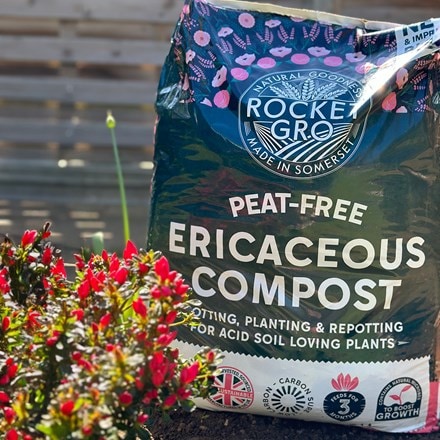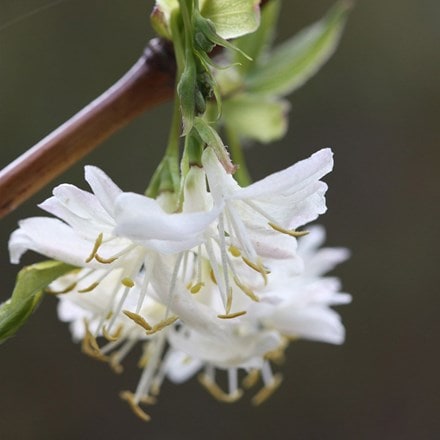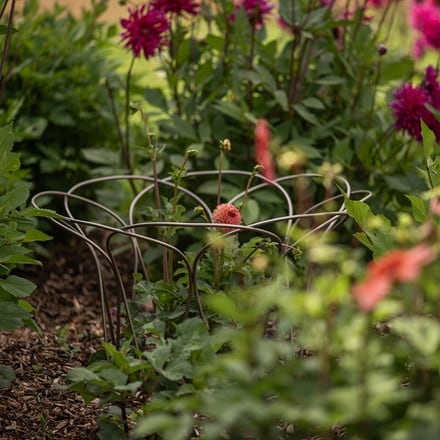Camellia × williamsii 'Anticipation'
camellia
- 2 litre pot
- £24.99
- available to order from autumn
Delivery options
- Standard £5.99
- Position: partial shade (but not east-facing)
- Soil: moist but well-drained, humus-rich, acid soil (or ericaceous compost for container-grown specimens)
- Rate of growth: fast
- Flowering period: February to March
- Hardiness: fully hardy
An extremely hardy camellia that produces large, ruffled, peony-form, crimson flowers in late winter and early spring. This handsome, evergreen shrub has glossy, bright green leaves, and is one of the most popular and easy-to-grow forms of camellia. Narrowly upright in habit, it's ideal for use in a large patio container or for creating an informal flowering screen. - Garden care: To prevent damage to the emerging buds and flowers protect from cold, dry winds and early morning sun. Water established plants in dry weather to prevent bud drop. Apply a balanced liquid fertiliser in mid-spring and again in June. Top-dress annually with shredded bark or well-rotted leaf mould. After flowering lightly trim or prune any branches that spoil the appearance of the plant.
Plant spring-flowering camellias in acidic, humus-rich, moisture-retentive soil with good drainage. Choose a sheltered spot in partial shade, ideally out of cold, drying winds and away from early morning sun, which can scorch flower buds.
Container-grown plants should be potted into ericaceous compost and kept well-watered, especially in dry spells, to prevent bud drop. Ensure good drainage in the pots to avoid waterlogging. Avoid allowing them to dry out in late summer, as this is when flower buds are forming for the following year.
Feed established plants with a balanced liquid (and preferably ericaceous) fertiliser in mid-spring and again in June. Apply an annual top-dressing of leaf mould or shredded bark to help retain moisture and maintain soil acidity. Pruning is generally minimal — after flowering, trim lightly to remove any dead or straggly growth and to maintain a neat shape.
For container plants, insulate pots in winter with bubble wrap or hessian to protect roots from freezing temperatures.
Container-grown plants should be potted into ericaceous compost and kept well-watered, especially in dry spells, to prevent bud drop. Ensure good drainage in the pots to avoid waterlogging. Avoid allowing them to dry out in late summer, as this is when flower buds are forming for the following year.
Feed established plants with a balanced liquid (and preferably ericaceous) fertiliser in mid-spring and again in June. Apply an annual top-dressing of leaf mould or shredded bark to help retain moisture and maintain soil acidity. Pruning is generally minimal — after flowering, trim lightly to remove any dead or straggly growth and to maintain a neat shape.
For container plants, insulate pots in winter with bubble wrap or hessian to protect roots from freezing temperatures.
